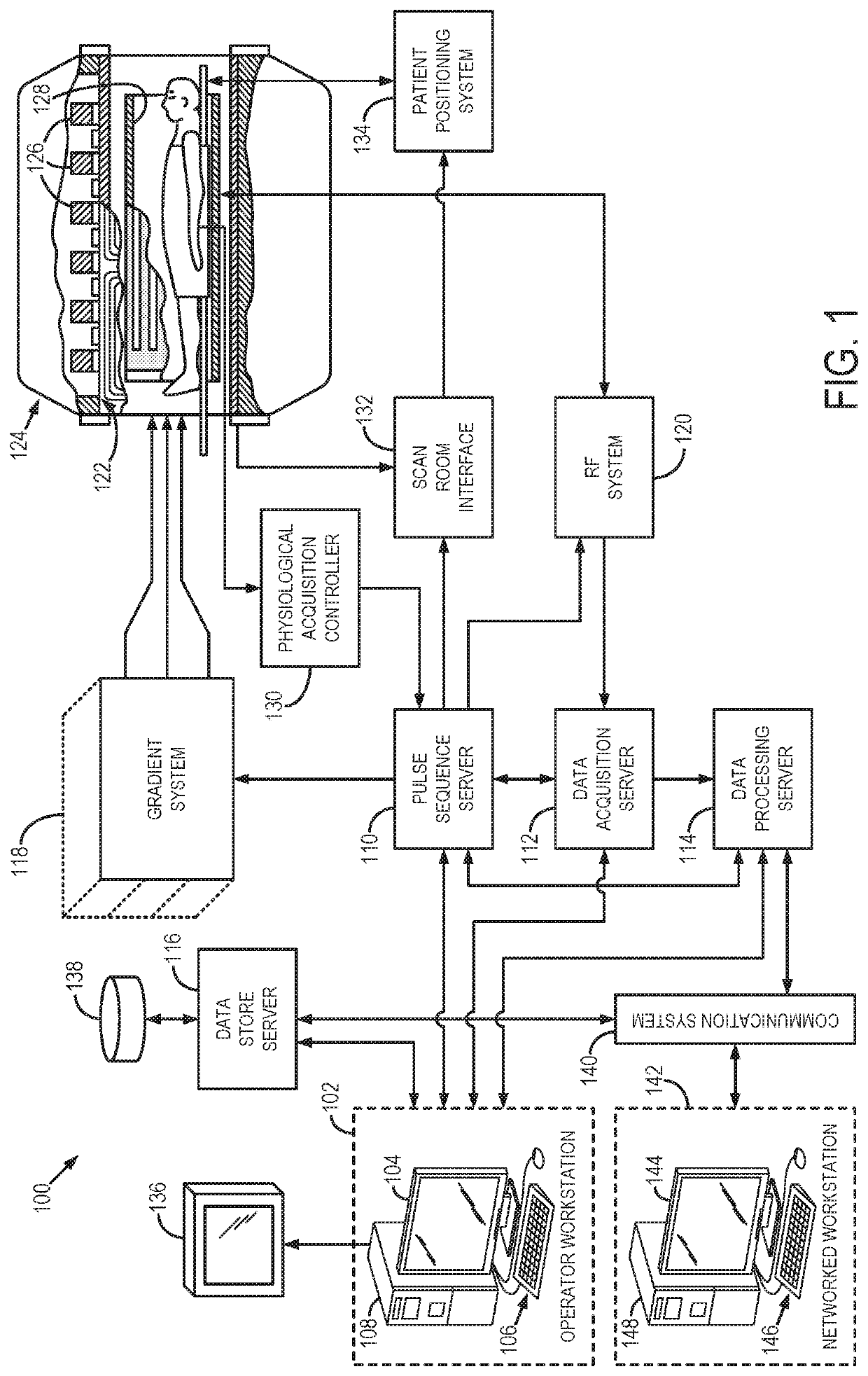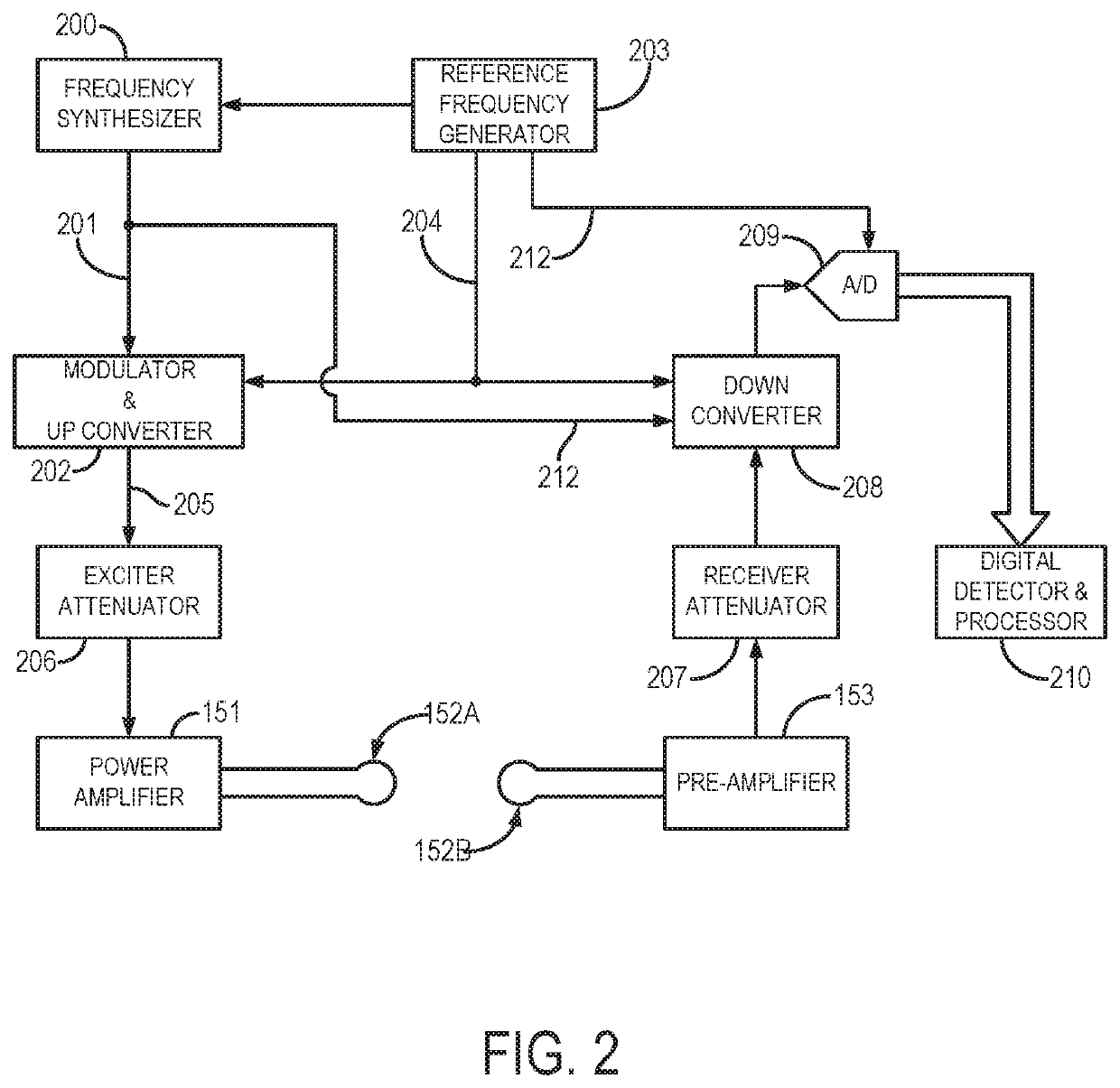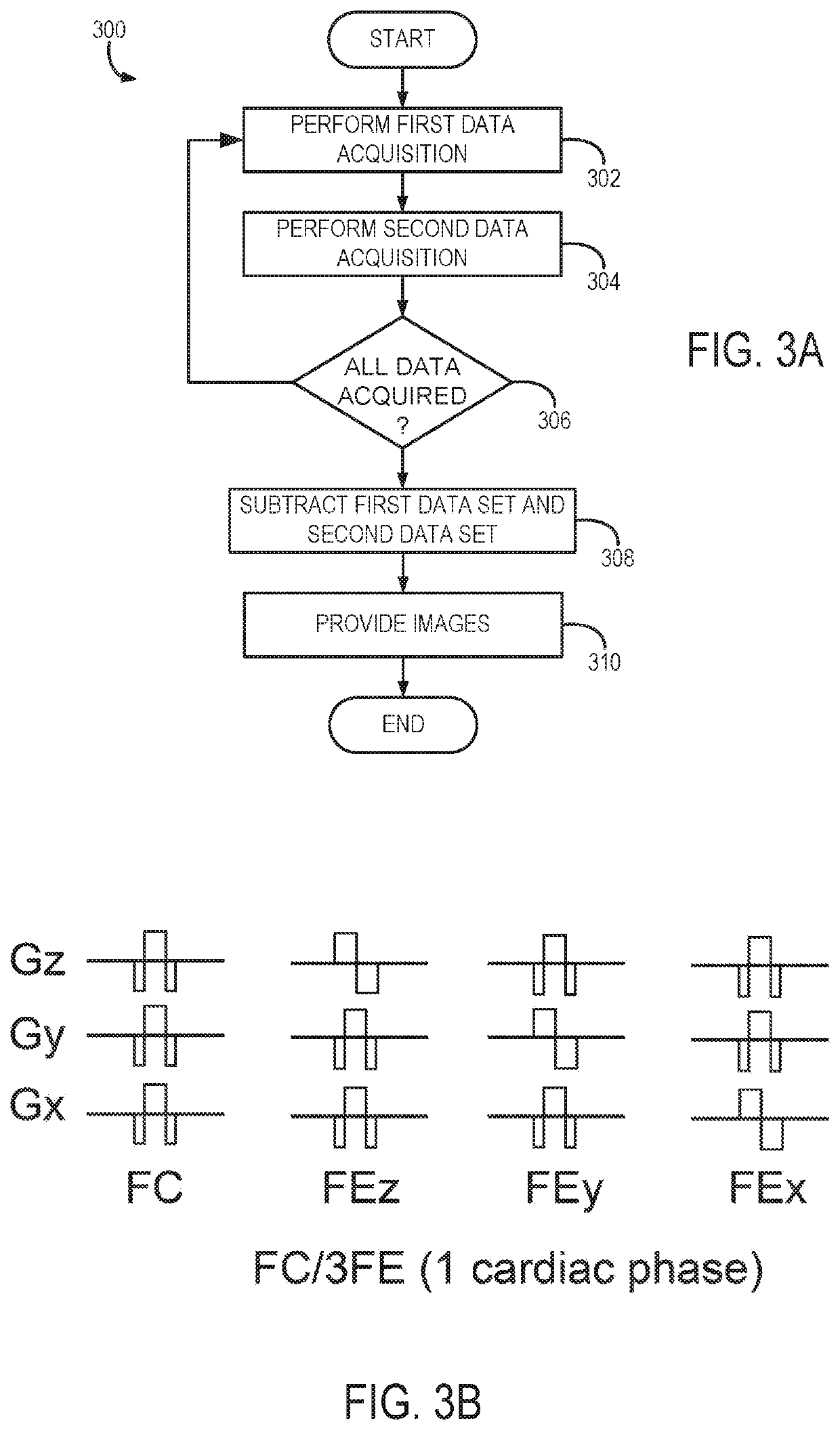System and method for phase-contrast MRI with hybrid one-and two-sided flow encoding and velocity spectrum separation (HOTSPA)
a phase-contrast and flow encoding technology, applied in the field of system and method for phase-contrast mri with hybrid, can solve the problems of not always feasible to determine if a stenosis, not always accurate or sufficient, and the contrast agent that must be administered to enhance the blood vessel carries a significant financial cost, so as to reduce the temporal sampling period and temporal footprint, and sample the hybrid m1-t space more efficiently.
- Summary
- Abstract
- Description
- Claims
- Application Information
AI Technical Summary
Benefits of technology
Problems solved by technology
Method used
Image
Examples
example
[0076]An example study was performed on a 3T scanner with a 4-channel neck (in vivo studies) coil. As used in this study, “mean flow velocity” means the average velocity within the entire blood vessel lumen. Also, “peak velocity” means the maximum velocity within the entire blood vessel. Further, “magnitude velocity” means the square root of sum of squares of 3D velocities (=√{square root over (Vx2+Vy2+Vz2)}). The magnitude mean flow velocity can be used to indicate the average magnitude velocity within the entire blood vessel lumen, and magnitude peak velocity can be used to indicate the maximum magnitude velocity within the entire blood vessel lumen. Finally, “maximum velocity” means the maximum velocity within the entire cardiac cycle. This often happens in the peak systolic cardiac phases.
Retrospective In Vivo Study (2D)
[0077]The commons carotid arteries (CCAs) of six volunteers were scanned using a 2D PC-MRI sequence with 3 FE directions (FC / 3FE). The sequence parameters includ...
PUM
| Property | Measurement | Unit |
|---|---|---|
| angle | aaaaa | aaaaa |
| velocity | aaaaa | aaaaa |
| peak velocity | aaaaa | aaaaa |
Abstract
Description
Claims
Application Information
 Login to View More
Login to View More - R&D
- Intellectual Property
- Life Sciences
- Materials
- Tech Scout
- Unparalleled Data Quality
- Higher Quality Content
- 60% Fewer Hallucinations
Browse by: Latest US Patents, China's latest patents, Technical Efficacy Thesaurus, Application Domain, Technology Topic, Popular Technical Reports.
© 2025 PatSnap. All rights reserved.Legal|Privacy policy|Modern Slavery Act Transparency Statement|Sitemap|About US| Contact US: help@patsnap.com



